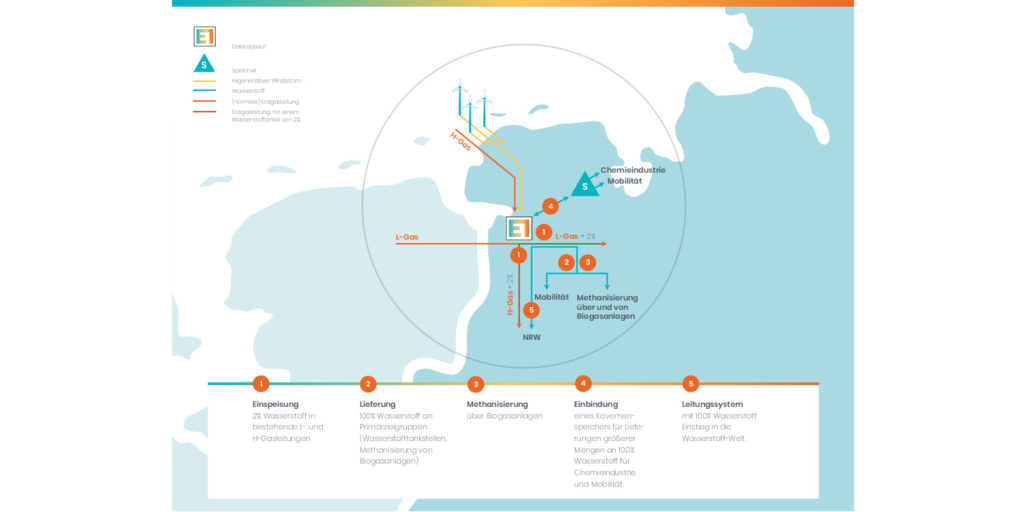from pv magazine Germany
German transmission system operator Tennet, Gasunie Deutschland and Thyssengas want to take the lead in the coupling of electricity and gas networks for the energy transition. The three grid operators have entered into concrete plans to build a 100 MW power-to-gas pilot plant in Lower Saxony, northwestern Germany.
According to the companies, “Element One” should be the largest plant of its kind in Germany to date. The plant, which is being built to gain initial experience with industrial-scale power-to-gas plants, will be connected gradually to the network from 2022.
Tennet’s two substations, Diele and Conneforde are both currently being considered for the project site, in which mainly offshore wind power from the North Sea will be collected and redistributed. This electricity should be converted into gas by the new plant, in order to tap into new storage potential for renewable energy as part of the energy transition.
The project is also about the comprehensive coupling of the energy, transport and industry sectors, according to the companies. The generated green gas can be channeled through existing lines from the North Sea to the consumer in the Ruhr area of Germany. However, it could also be used for mobility via hydrogen filling stations and made available to industry through storage caverns.
Lower Saxony's Minister of the Environment and Energy, Olaf Lies, defined the project as a “very important signal for Lower Saxony as an energy state”. The energy transition should not be viewed exclusively as a turnaround. ” Some industrial companies are already working on power-to-gas technologies. We need to implement industrial policies that specify standards for the relevant facilities.
That is happening in this case: “There is great potential for development, especially when it comes to coupling the electricity and gas grids,” continues Lies. The project is also being supported by the German Federal Ministry of Economy. “I am convinced that the use of renewable energy as hydrogen will be an important answer to still-open questions of the energy transition,” said Parliamentary Secretary of State Thomas Bareiß.
From Tennet's point of view, power-to-gas has great potential when it comes to creating the necessary flexibility in the power grid of the future. “We need powerful storage technologies if we want to achieve our ambitious expansion target for renewable energy by 2030,” said Tennet CEO Lex Hartman. “The ability to store large volumes of renewable electricity will reduce the load on the power grid. That, in turn, helps us limit the expensive curtailment of wind turbines and make the power supply more reliable.” At the same time, more storage options could save network expansion costs.
This content is protected by copyright and may not be reused. If you want to cooperate with us and would like to reuse some of our content, please contact: editors@pv-magazine.com.




2 comments
By submitting this form you agree to pv magazine using your data for the purposes of publishing your comment.
Your personal data will only be disclosed or otherwise transmitted to third parties for the purposes of spam filtering or if this is necessary for technical maintenance of the website. Any other transfer to third parties will not take place unless this is justified on the basis of applicable data protection regulations or if pv magazine is legally obliged to do so.
You may revoke this consent at any time with effect for the future, in which case your personal data will be deleted immediately. Otherwise, your data will be deleted if pv magazine has processed your request or the purpose of data storage is fulfilled.
Further information on data privacy can be found in our Data Protection Policy.